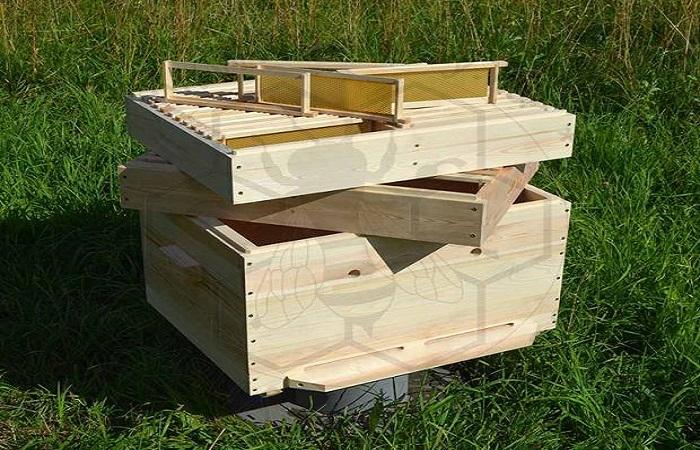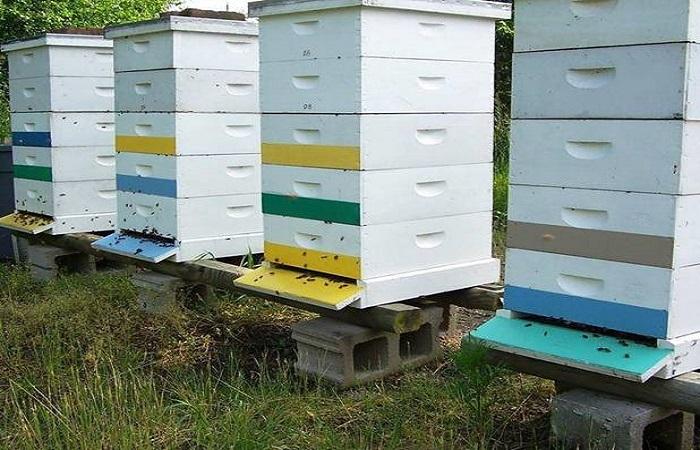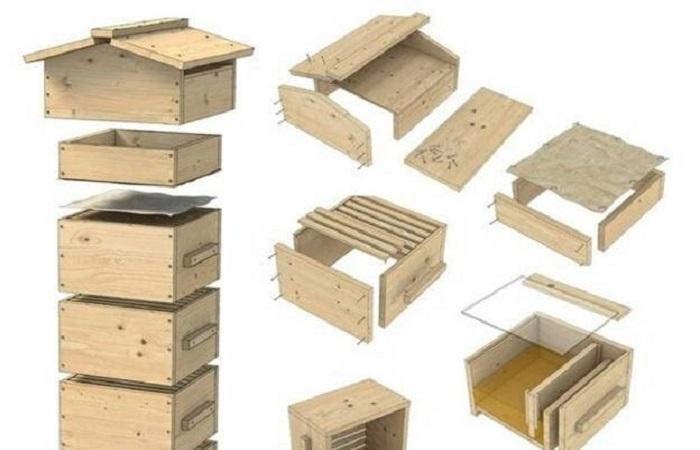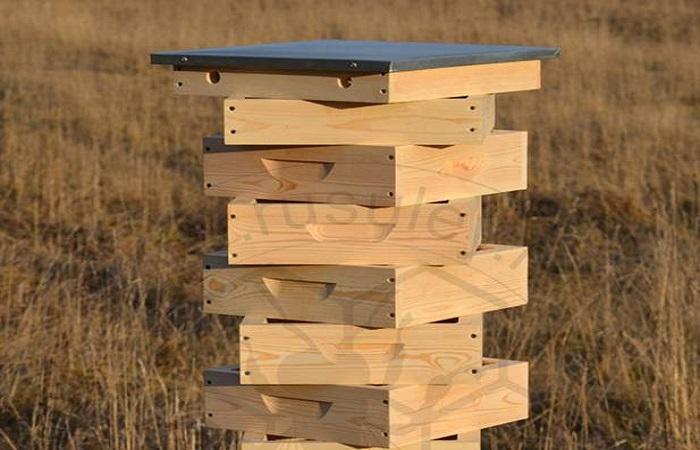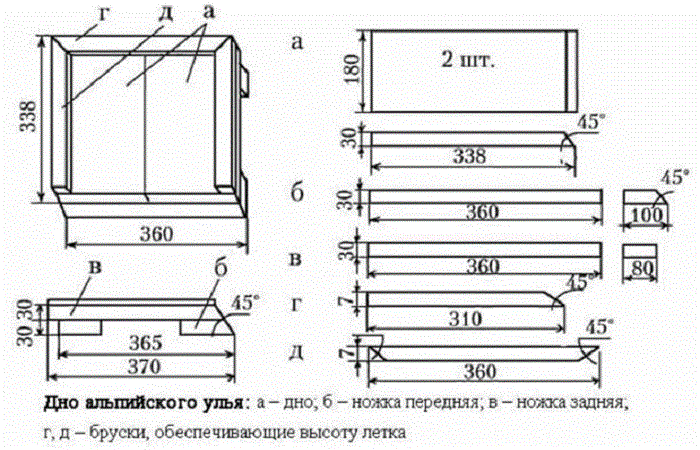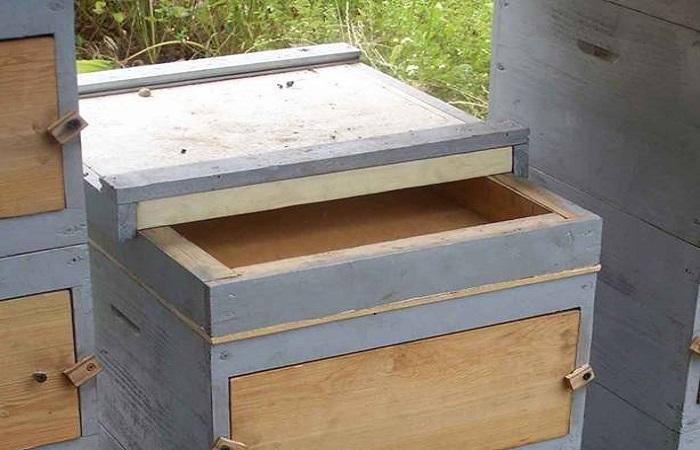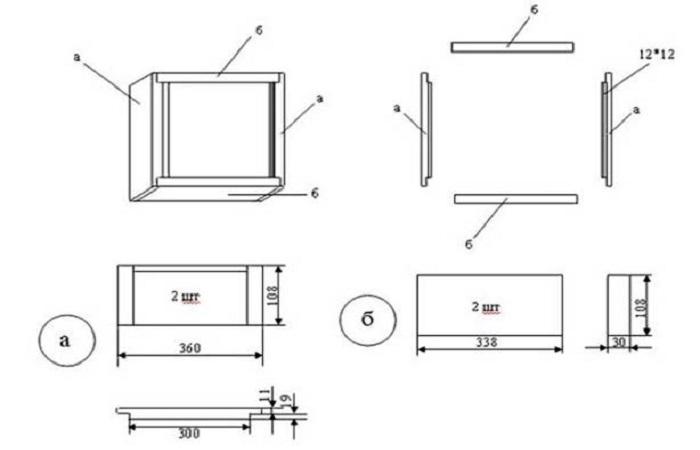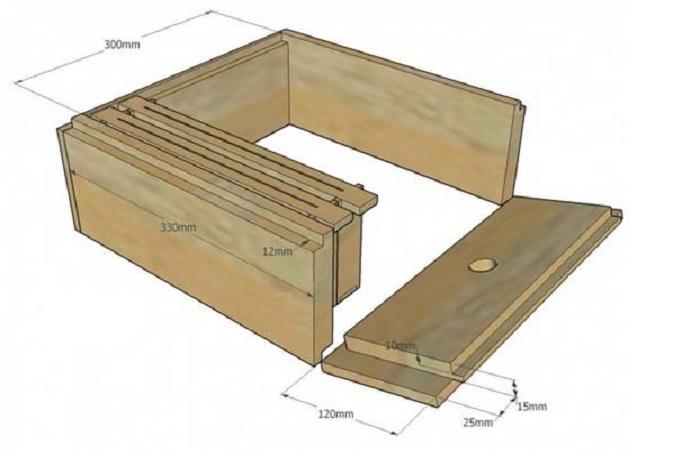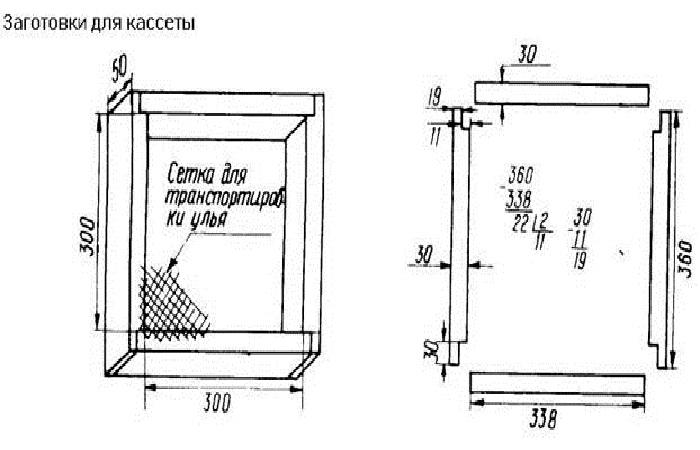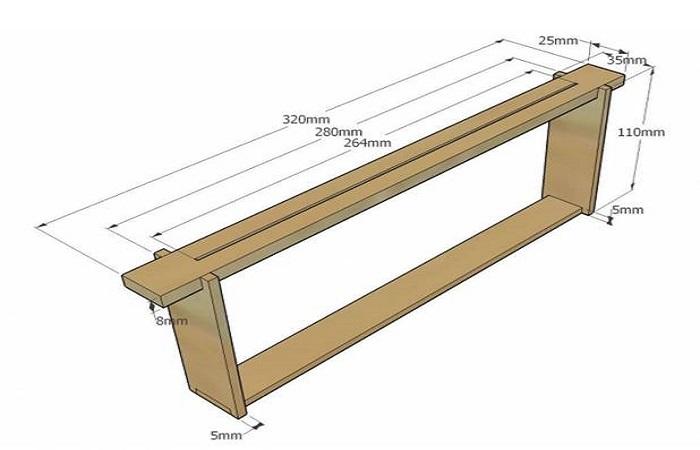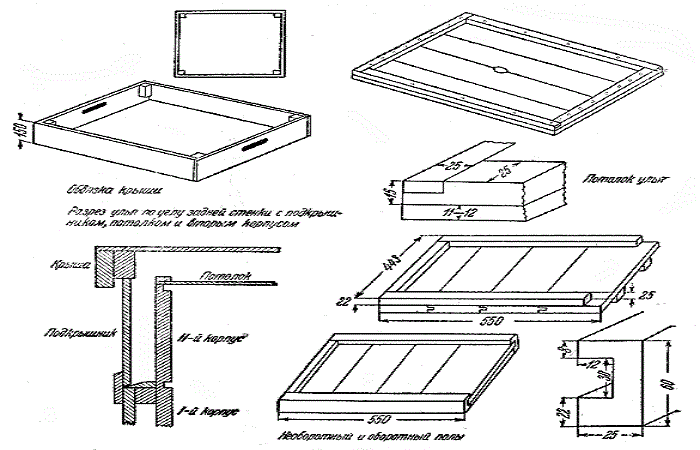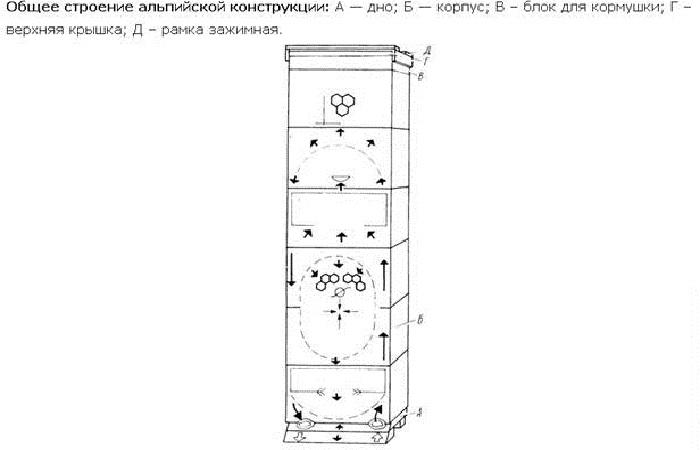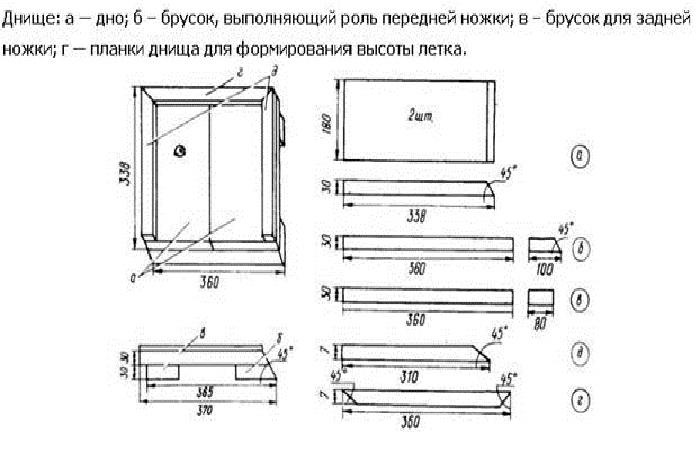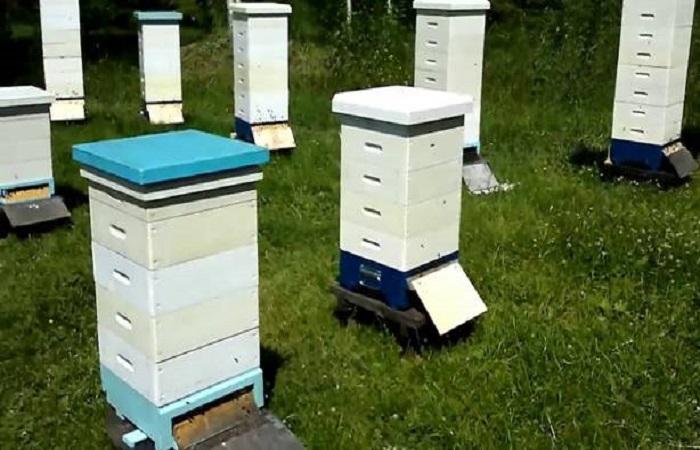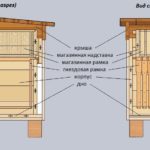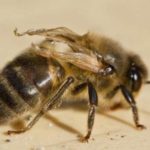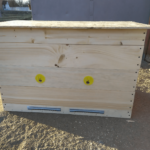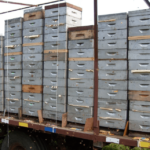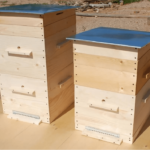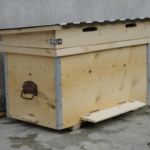An Alpine hive is a special design that received a different name from its inventor. He described it as a “stable climate.” The “Alpine” scheme for organizing a bee habitat was called on the territory of the Soviet Union. This designation reflected the main properties: it was assumed that the bees would be comfortable inside, and the design of the hive would allow them to survive the most difficult weather conditions without loss.
What is an alpine hive?
The Alpine hive was invented by French beekeeper Roger Delon. He called it a “stable climate” and brought it to a scientific conference. Since then, Delon has come to be considered an unsurpassed specialist in the study of the life of bee colonies.
The peculiarity of the design invented by Delon is the conditions that are as close as possible to natural properties, as well as the ability of the beekeeper to work with insects without difficulty.
The idea of creating a beehive haunted the author for many years. He was able to realize it only in the 1960s.
The scientist supported 1000 families using his own inventions. He placed all the devices on an area of 120 square kilometers. The trick to setting up the hive was that it did not require daily maintenance. The task, as the inventor said, was different. He managed to create special techniques that ensure maximum income at minimal cost.
An analogue of the design is the hollow of an old tree. The hive consisted of several buildings, which, according to the author's idea, should have been well ventilated throughout the entire period of honey collection.
Each design looks like a box with standard dimensions, each of them contains 8 frames made of wire. As families grow, the boxes are stacked on top of each other. Many beekeepers compare the principle of building an alpine hive to a game of cubes.
Advantages and disadvantages
Those who use Delon's diagrams and drawings describe the main advantages of the invention:
- families are developing rapidly, as living conditions are close to natural;
- honey collection indicators;
- each hive weighs only 20 kilograms;
- the apiary can be located in a small area;
- does not require constant care;
- bees form honeycombs themselves;
- low costs;
- beekeepers build alpine hives on their own, using available materials;
- good appearance.
The peculiarity of Delon's design is the ability to provide the bees with maximum freedom. Insects that build their own honeycombs are more interested in productivity. Related to this is another obvious advantage of the design - the microclimate inside the bee colony. When everyone is busy with their own business, there is no time left for meaningless chaotic movement. According to reviews from domestic and foreign experts, bees that emerge from Alpine hives look strong and healthy.
In addition to the advantages, the design also has disadvantages:
- bees build honeycombs at their own discretion, and the result is compression of the lower honeycombs by the upper honeycombs;
- the colony develops quickly (this can be a disadvantage if the beekeeper does not plan large volumes of production);
- families from ordinary hives take a long time to take root;
- There are no wire frames on sale - you have to make them yourself.
The Alpine has disadvantages that can be adapted to specific conditions. The listed disadvantages are easily solved.
The only thing that cannot be corrected is the low survival rate of bees from ordinary hives. Beekeepers do not recommend experimenting with this property.
Drawings and dimensions
The design is considered quite simple. Minimal experience in working with materials will allow the beekeeper to build a hive on his own.
Drawings and dimensions:
- 360 by 230 – size for walls;
- 324 by 57 – dimensions for the bottom.
DIY making
To make a hive with your own hands, you will need to prepare materials and tools in advance:
- wooden slats;
- bars;
- sanded boards;
- screws;
- platform stand;
- wire 20 meters long;
- screwdrivers, saw, jigsaw, hacksaw.
Khomich adapted the design for the Soviet Union. He suggested that beekeepers make such hives themselves.
hive body
For the body you will need 4 wooden boards, pine boards are best. The blanks are pre-treated with antiseptic solutions, then the housings are fastened with a screwdriver.
Bottom of the structure
To make the bottom, pine boards 30 millimeters thick are taken. The surface is treated with an antiseptic on both sides. The entrance gap is made at a height of 30 millimeters, and the landing board is made at an angle of 45 degrees.
Cassette
The cassette is made for queen cells. In addition, royal jelly is stored there and is also used for transportation.
Roof
The roof is also a feeding trough. Sheets of thin plywood or furniture cardboard are used for it. There must be insulating material between the sheets, and the top must be reinforced with roofing material.
Framework
You will have to make the frames yourself, since such frames cannot be found on sale. The frame is mounted on the bar using wire. The length of the workpiece is 730 millimeters. Each design requires 8 frames.
Important Operating Principles
During the summer stage of keeping bees, the difference between an alpine hive and a regular one is almost not noticeable. It begins with the arrival of cold weather. Strong families traditionally move to single-tier hives, while weak ones remain inside multi-tiered ones. At the bottom of the compartment there is a queen with her brood. The upper body is traditionally left for a feeder with a supply of honey and pollen.
When the first warm days come after the pestilence, the bees begin to gradually move from the lower compartment to the upper one.As the lower compartment is emptied, it is removed. It turns out that while caring for an Alpine, beekeepers seem to be playing with cubes, constantly rearranging the compartments.
Domestic modernization of Khomich
The hive was modernized by Vladimir Khomich. He made the design so that frames 108 millimeters long could be used inside. The effectiveness of this technique was proven in Khomich’s apiary, which included a variety of alpine hives with movable wheels. Khomich came up with a platform that made it possible to transport hives in search of more suitable honey plants.
Gradual migration of bees
Beekeepers who decided to transfer ordinary bee colonies to alpine hives admit that this has become a real problem. It can take a long time to train bees.
If you have experience, you can try experimenting. Beekeeping is a science, so advice and recommendations cannot be neglected.
Beekeepers advise placing the queen in the upper compartments of the buildings, separated by ceiling diaphragms. After the young animals appear inside the hive, they are combined with the rest of the bees. In the territory of the new hive, the queen is provoked to lay new eggs. For this to happen, the uterus will need to be moved lower.
The queen will move upward, guided by natural instinct, and lay eggs along the path of movement. The optimal time for relocation is the beginning of May. Then the young will be born at the beginning of flowering and begin work collecting pollen.

